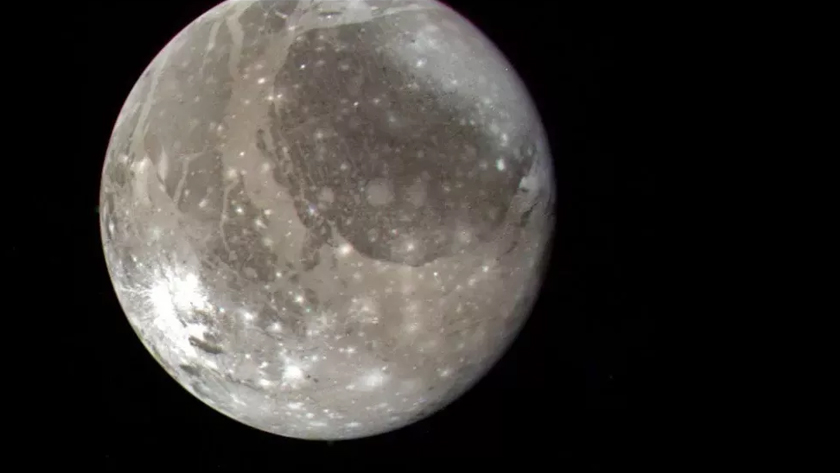Iran Press/ Sci & Tech: The water vapor forms as the icy surface of the moon turns from a solid to a gas, a process called sublimation. Astronomers uncovered this water vapor while using a combination of new and archival observations from Hubble.
A study on their findings was published Monday in the journal Nature Astronomy.
Previous research has suggested that Ganymede -- the ninth-largest object in our solar system -- contains more water than all of Earth's oceans put together, although the moon is 2.4 times smaller than our planet, CNN reported.
 The Jupiter moon Ganymede, the largest satellite in the solar system, as seen by NASA’s Voyager 2 spacecraft on July 7, 1979, from a distance of 745,000 miles (1.2 million kilometers). (Image credit: NASA)
The Jupiter moon Ganymede, the largest satellite in the solar system, as seen by NASA’s Voyager 2 spacecraft on July 7, 1979, from a distance of 745,000 miles (1.2 million kilometers). (Image credit: NASA)
But Ganymede is so cold, with temperatures that can reach negative 300 degrees Fahrenheit (-184 degrees Celsius), that the surface is a frozen water ice shell. About 100 miles (161 kilometers) below this crust is likely a salty ocean -- and researchers knew there was no way that ocean was evaporating through the ice shell to create water vapor.
The moon is named for a cupbearer to the ancient Greek gods. In addition to being the largest natural satellite in our solar system, Ganymede is also the only moon to have a magnetic field. This causes auroras to glow around the moon's north and south poles.
Ganymede's surface temperature can vary significantly over the course of a day. Around noon at the moon's equator, it becomes warm enough for the icy surface to sublimate or release small amounts of water molecules -- which explains the differences seen in the ultraviolet images taken by Hubble. Even though Ganymede's ice shell is as hard as a rock, a stream of charged particles from the sun is enough to erode and release water vapor.
224/214
Read More:
Breathable oxygen made on Mars
Elon Musk swears to send humans to Mars by 2026
Mojtaba Darabi

